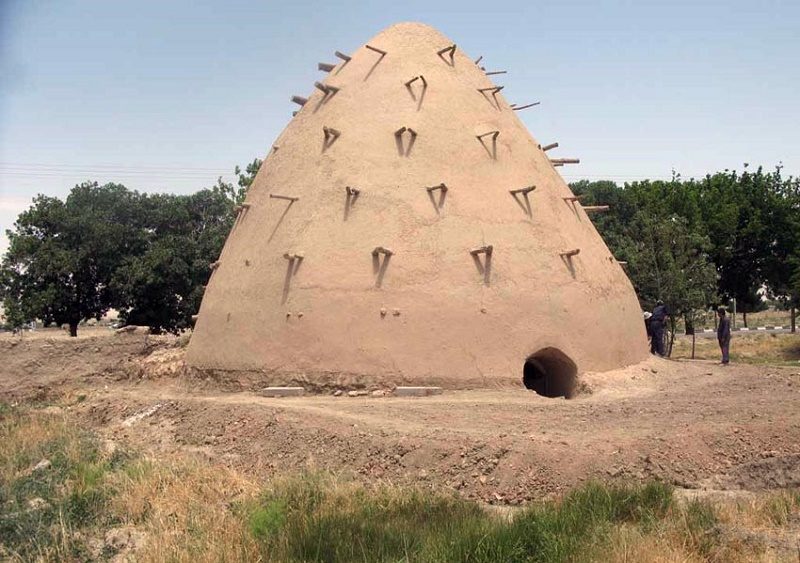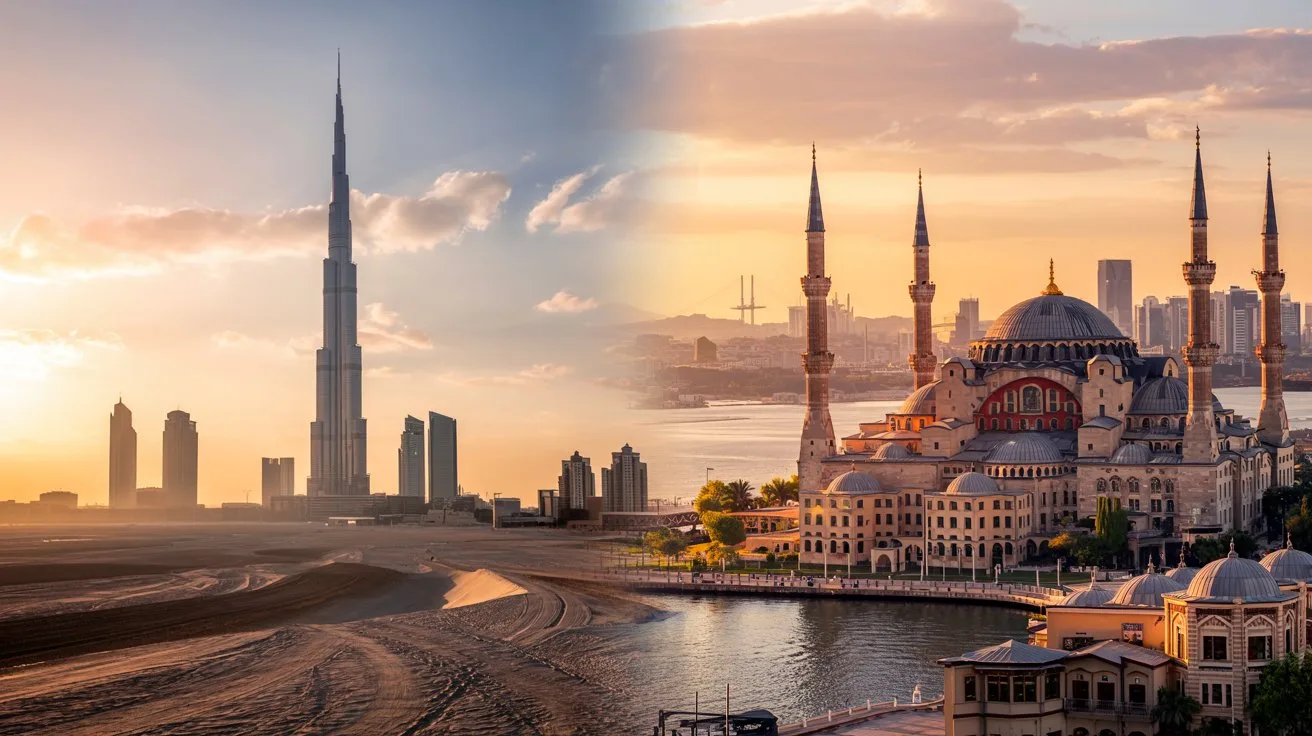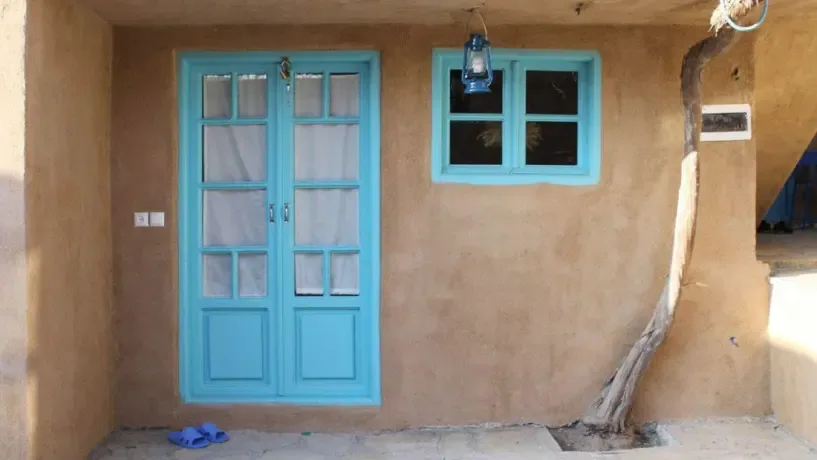Guchan Attractions: From history to Darbadam Village
The county of Guchan, or “Khobushan,” is a historically significant city with a long heritage in the Razavi Khorasan Province. Situated in the northwest of the province, Guchan is approximately 140 kilometers (1 hour and 50 minutes) away from Mashhad and 130 kilometers (90 minutes) from Bojnourd, the capital of North Khorasan Province. Given its strategic location at the center of a pentagon formed by Mashhad, Neyshabur, Bojnourd, Sabzevar, and the capital of Turkmenistan, Guchan is recognized as a strategically important county in the region.
where is Guchan ?
According to historical sources and the opinions of historians, Guchan was the first capital of the Parthian Empire. Therefore, the city of Guchan is rich in history and culture, with numerous historical monuments. Interestingly, more than 40 nationally registered historical sites exist in this county. In the following, we will introduce you to some of the tourist attractions in the Guchan County.
Guchan Attractions
Atrek River
Atrek River, also known as “Atrak,” is one of the most abundant and turbulent rivers in northeastern Iran, known for its flood potential. It is also one of the longest rivers in Iran, originating from the mountains of Hazar Masjed, Aladagh, and Binalood in the Guchan County. It traverses the plains of Guchan, Farouj, Shirvan, and Bojnourd, ultimately flowing into the Caspian Sea in Turkmenistan.
With a total length of about 670 kilometers, Atrek River ranks as the sixth longest river in Iran. The best scenery and area to visit this river are in the Turkmen Sahara plains, located in the Golestan Province. The best seasons to visit Atrek River are winter and spring when the river is fuller than other seasons. One of the most enjoyable activities in this area is fishing in the river, which, combined with picnics, camping, and horseback riding with Turkmen horses, offers a doubly delightful experience.
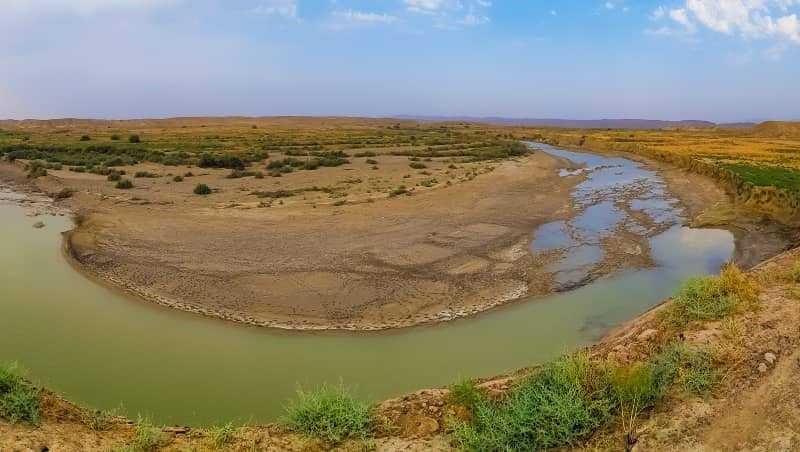
Shamkhale Valley
Shamkhale Valley is located 80 kilometers north of the city of Guchan, near the border with Turkmenistan. This valley is one of the most pristine and challenging-to-access attractions and passes through an approximately 18-kilometer-long gorge with walls reaching up to 200 meters in some parts. The convergence of the Sharak, Qarche, Darbadam, and Shamkhale rivers has turned Shamkhale Valley into a water-rich area, making swimming and water activities among the most popular recreations in this region.
Beautiful and tall trees such as walnut, plum, plane, mulberry, and more not only add to the beauty of Shamkhale Valley but also create a pleasantly fragrant atmosphere, as if you are walking in a piece of paradise. The best time to visit Shamkhale Valley is during spring and summer.
Sarab Waterfall and Valley
Sarab Waterfall and Valley, or “Shar Shar” (meaning the sound created by the fall of water), is one of the unique attractions of Guchan County. It is located approximately 15 kilometers south of the city of Guchan, in the foothills of the Sangar and Mohammad Bik mountains, with an altitude of about 2,840 meters. The approximate height and width of this waterfall are 20 and 30 meters, respectively. The combination of the waterfall with the beautiful and diverse surrounding nature creates a breathtaking scenery that captivates the gaze of any beholder.
The best times to visit Sarab Waterfall and Valley are during spring and summer. In addition to the lush and varied nature of this area, you will be surprised by its moderate and pleasant climate.
Prince Bathhouse
The Prince Bathhouse, located on Goharshad Street in the city of Guchan, was built in the late Qajar period in the center of the city. In the past, the bathhouse had separate entrances for ladies and gentlemen, each leading to spaces such as the dressing room, main hall, treasury, basin room, water reservoir, janitorial room, and a mosque. During the Pahlavi era, the bathhouse underwent reconstruction and transformed into a dual-use bathhouse. In 1382 AH, it was registered as a national heritage site by the Cultural Heritage Organization with the registration number 10179.
Unfortunately, the Prince Bathhouse is currently not in good condition and is facing the threat of demolition. It is hoped that authorities will take steps to preserve this valuable building through restoration.

Old City Hot Spring
The Old City Hot Spring is located approximately 20 kilometers west of Guchan. Destroyed by the Mongols in 618 AH, it was later reconstructed by Hulagu Khan. The hot spring, known for its therapeutic hot springs, attracts many tourists regardless of the season. In 1384, it was nationally registered with the number 13428.
Guchan Ethnographic Museum
Guchan Ethnographic Museum, with an area of 300 square meters, is situated in Azadi Square in the city of Guchan. Originally starting as the Mayor’s restaurant in 1355 AH, it was handed over to the Cultural Heritage Organization in 1367 and finally converted into a museum in 1385 AH.
The museum aims to introduce and display the traditions, historical themes, and customs of the region. The three main halls depict the lifestyle, livelihood, marriage customs, arts and crafts, and historical artifacts of Guchan and its surrounding areas. A visit to this museum promises to be enlightening and informative.
Guchan Grand Mosque
Guchan Grand Mosque is located on Imam Khomeini Street in the city of Guchan and has a history of over 140 years. Visitors to the city consider this mosque as one of the attractions of Guchan. The mosque employs Islamic architecture, featuring a southern porch with large crescent-shaped windows. Islamic inscriptions and beautiful names of Allah adorn the walls between the windows, creating a special charm in the mosque’s interior.
Guchan Bazaar
Guchan Bazaar is situated at the beginning of Imam Khomeini, Imam Zaman, Motahari, and Shahid Beheshti streets in the city of Guchan. Its history dates back to the late Qajar and early Safavid periods. The bazaar includes sections for sellers of traditional fabrics, dyers, shoemakers, and more. In 1385 AH, it was registered as number 17872 in the collection of Iran’s historical monuments.

Guchan National Garden
Guchan National Garden is located in the Love Abad market, before the German Bridge in Guchan. While not one of the largest parks, it offers good amenities such as green spaces, a café, restaurant, children’s playground, sanitary facilities, and numerous stone benches for relaxation and short walks. Occasionally, celebrations are held in this park for religious occasions, bringing together tourists and locals.
Bajgiran Tourist Area
Bajgiran Tourist Area is located 80 kilometers north of Guchan and is also two kilometers south of the Iran-Turkmenistan border. This mountainous region boasts exceptional weather. Notable attractions in Bajgiran include Shamkhale Valley, Darbadam Valley, Sharak Valley, Qorqoqeh Valley, border market, World War II bunkers, the largest tunnel in the eastern part of the country, fish breeding lakes, and more. The best time to visit the Bajgiran Tourist Area is during the spring and summer seasons, allowing visitors to enjoy the rivers and lush vegetation of the region.
Naderi Hill (Marvarid Tapeh)
Naderi Hill, also known as Marvarid Tapeh, is situated on Zamin Zarrabi Street in the city of Guchan. This hill is one of the most important tourist attractions and recreational spots in Guchan. It was constructed during the Safavid and Qajar periods and was registered as a national heritage site in 1389 with the number 29531.
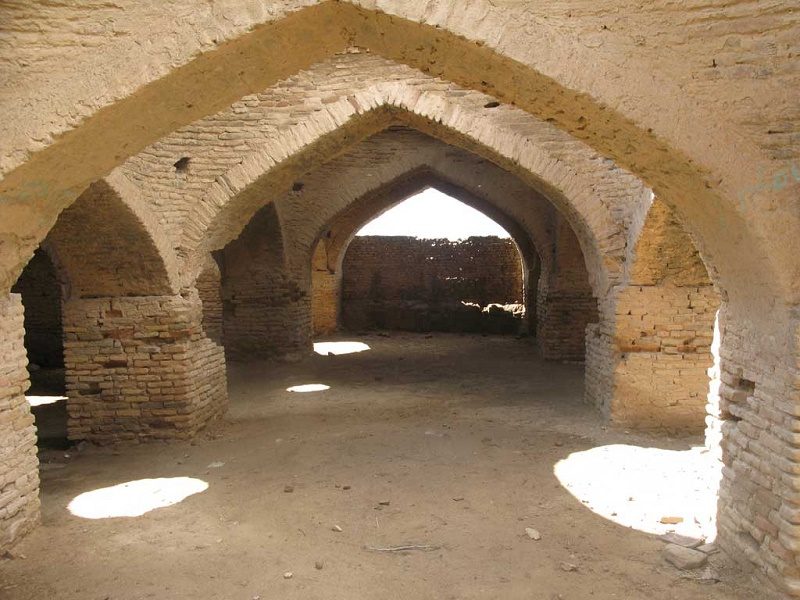
Namad Mal Icehouse
Namad Mal Icehouse is located on the southern outskirts of Guchan, on Shahid Beheshti Street, facing the old cemetery. This historical and unique structure dates back to the Qajar era and was registered as a national heritage site in 1384 with the number 11937.
The building materials of Namad Mal Icehouse include bricks and clay, arranged in tall conical shapes. The icehouse has two northern and southern doors, with the northern door currently sealed. The surrounding wooden beams were used for reinforcement and resilience, also serving as structural elements. These beams are visible throughout the surface of Namad Mal Icehouse. Originally, this icehouse had shading walls and a basin, but over time, they collapsed and were destroyed.
Tabarak Dam Area
Tabarak Dam is located 30 kilometers northeast of Guchan, at the foothills near the Tabarak village. The dam, operational since 1383, has a height of 74 meters. Its purpose is flood control for the region and providing drinking water for the county. The moderate and pleasant climate, the flow of the Etrak River, abundant orchards, tall mountains, and ornamental and medicinal plants have significantly contributed to attracting tourists to this area. The best time to visit Tabarak Dam is during the spring.
Tabarak Dam, aside from its abundant water resources, hosts numerous migratory birds and various river fish each year. Fishing is a popular recreational activity for tourists visiting the dam, so if interested, be sure to bring fishing equipment for a memorable experience.
Sahl Abad Caravanserai
Sahl Abad Caravanserai is located 50 kilometers southeast of Guchan, on the northern outskirts of Sahl Abad village. Constructed in the late Timurid and early Safavid periods, this caravanserai served as a resting place for travelers and caravans. This historical structure, with an area of about 480 square meters, was registered as a national heritage site in 1381 with the number 7608.
Kolah Rock Architecture (Kolah Cave)
Kolah Rock Architecture, also known as Kolah Cave, is situated 25 kilometers east of Guchan, in the village of Kolah. The cave features numerous wide and interconnected chambers or rooms. The interior space of Kolah Cave is approximately 12 meters long, with five large and small rooms on each side, each measuring 180 centimeters in height. Sixteen well rings with varying depths are placed on the floor of these rooms. Kolah Cave was registered as a national heritage site in 1381 with the number 5944.
Two theories exist regarding the age of the chambers in Kolah Cave. Some attribute the rock architecture to the Ilkhanid period, while others suggest that Kolah Cave served as a place of worship for a Sufi sect. This sect, due to political and religious issues of the time, preferred to live collectively in mountain crevices.
Sharak Village
Sharak Village, also known as “Shahrak,” is part of the Bajgiran district, located 70 kilometers north of Guchan and 30 kilometers from the Turkmenistan border. Besides its cool climate, Sharak boasts a distinctive feature compared to other regions in the county – the freshness and cleanliness of the air and environment throughout the year. This unique feature attracts tourists to Sharak in all seasons.
In the past, Sharak and its residents served as summer and winter quarters for Turkmenistan and the village itself, but after the signing of the Akhal Treaty in 1299 AH (between the Qajar Empire of Iran and Russia, determining the borders in the Turkmen-inhabited region east of the Caspian Sea), this possibility was no longer available. Some residents who had migrated to Turkmenistan were forced to live there and could not return to Iran.
Yedak Village
Yedak Village, also known locally as “Ig,” is located 50 kilometers east of Guchan in the Shireen Dareh district. It is a beautiful village with a pristine landscape that includes one of the main sources of the Etrak River. The cool, sweet, and abundant water of this village is renowned, and its refreshing and joyful atmosphere is owed to the numerous trees and mountains surrounding the area.
Yedak Village has a long historical background, with remnants of four ancient ruined villages that once had populations visible around the current village area. The attractions of Yedak Village include the Yedak Valley, beautiful waterfalls, shrines, other gushing springs, and its connection to protected forest areas with rows of cypress trees to the north.
Barsalan Village
Barsalan Village, located 40 kilometers south of Guchan in the Doghai district, has a history that dates back over 500 years. The village enjoys a moderate and cold climate, and its rock architecture is considered one of its notable attractions. Barsalan Village was registered as a national heritage site in 1384 with the number 11904.
Darbadam Village
Darbadam Village is located 60 kilometers north of Guchan on the transit road from Guchan to Bajgiran. The village is surrounded by high mountains with an elevation of approximately 2,000 meters to the west and south. Notable attractions in Darbadam Village include beautiful and lush meadows, vibrant and flowing rivers, the Imamzadeh Ali Balagh, and Imam Bad Spring, all of which have consistently captured the attention of pilgrims and tourists.
Darbadam Village, due to the constant flow of water from the Shahreg River and the refreshing nature around the rivers, is considered one of the recreational and resort areas in the Guchan county.
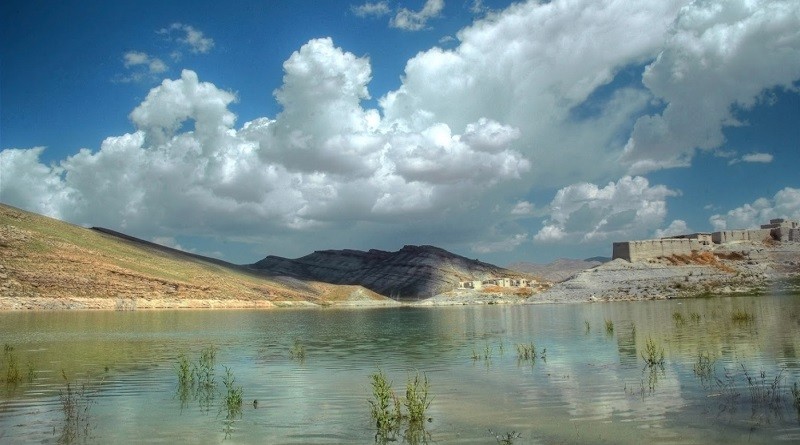
Soltan Zirabeh Village
Soltan Zirabeh Village is situated 40 kilometers northeast of Guchan, nestled in the foothills of Mount Kooshk. This village, with its beautiful attractions such as vast natural grasslands, shrines, ancient and historical sites, numerous springs, and entertainment activities like traditional Iranian wrestling (Chukhe wrestling), has always been a host to a large number of tourists and travelers.
The traditional wrestling competition with Chukhe wrestling is one of the most famous events in Soltan Zirabeh Village. This competition, held on the 13th day of Farvardin (coinciding with Nature Day and the thirteenth day of the Iranian New Year), gathers participants from wrestlers and athletes across Khorasan in this ancient arena.
Rahvard Village
Rahvard Village is located 35 kilometers north of Guchan in the Bajgiran district and the Dolatkhaneh township. This village, with its stunning natural scenery, including vast green meadows, historic sites, numerous springs, and engaging activities such as Chukhe wrestling, has consistently attracted a significant number of tourists and travelers.
The Chukhe wrestling competition is one of the most famous events in Rahvard Village. This competition takes place on the 13th day of Farvardin, coinciding with Nature Day and the thirteenth day of the Iranian New Year, with the participation of wrestlers and athletes from all over Khorasan in this ancient arena.
Rehord Village
Rehord Village, situated 35 kilometers north of Guchan in the Bajgiran district and the Dolatkhaneh township, has a breathtaking natural environment in the month of Ordibehesht (April/May). In the middle of the village stands a tall hill made of clay, which contains beautiful rooms, passages, and chambers, indicating the existence of an ancient buried city known as “Shahr Zar” or “Shahr Firouzeh.” The architecture of this hill and the discovered artifacts suggest a highly advanced civilization. The subterranean building of Rehord Village was registered as a national heritage site in 1384 with the number 11905.
Imamzadeh Sultan Ibrahim Shrine
Imamzadeh Sultan Ibrahim Shrine is located 10 kilometers west of Guchan in Shahrekaneh, along the Guchan-Bajgiran road. The early historical origins of the shrine date back to the Khwarazmian era and the reign of Sultan Mohammad. Notable features of this structure include the Abbasid hall, the calligraphy workshop (which has undergone changes over time), exquisite tilework, intricately decorated mihrabs, and unique halls like the Gold Hall.
Imamzadeh Sultan Ibrahim is highly revered by the people of Guchan, and as such, it welcomes tourists and pilgrims throughout the year. The octagonal entrance of this shrine, dating back to the Qajar period, was registered as a national heritage site in 1384 with the number 11936.
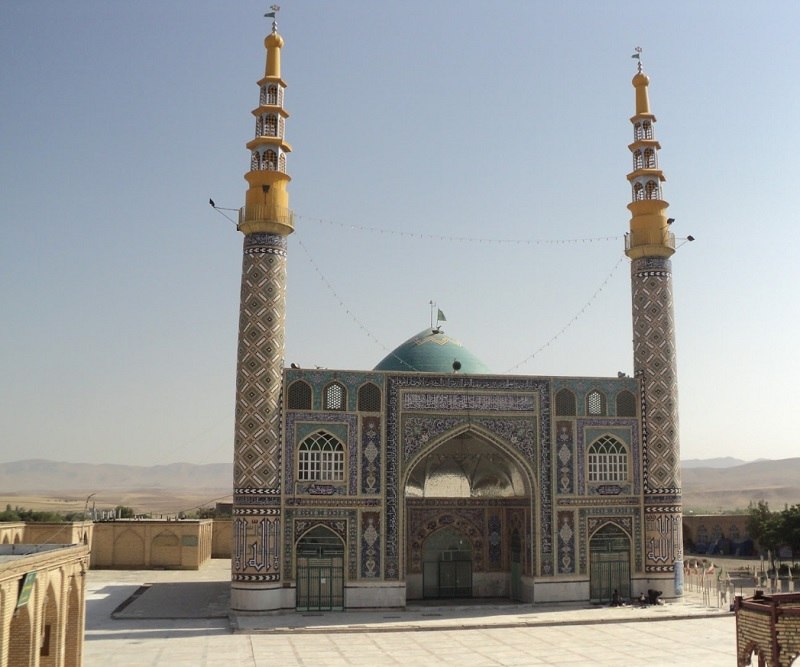
Imamzadeh Sultan Hossein Shrine
Imamzadeh Sultan Hossein Shrine is situated 10 kilometers southwest of Guchan in the village of Noroozi. This religious attraction, as one of the pristine and lush areas in Guchan county, attracts numerous tourists and pilgrims. The surroundings of the shrine feature green gardens, most of which are dedicated to the shrine. Imamzadeh Hossein and Imamzadeh Taleh’s tombs are also located in the village of Noroozi.
If you have visited any of the attractions in Guchan mentioned in this article, please share your thoughts and experiences with our readers below. Additionally, feel free to introduce other Guchan attractions that are not covered in this article.
FAQs:
Where is Darbadam Village in Guchan?
Darbadam Village is located 60 kilometers north of Guchan on the transit road from Guchan to Bajgiran.
What is the distance from Shemkhal Valley to Guchan?
Shemkhal Valley is 80 kilometers north of Guchan, near the border with Turkmenistan.

